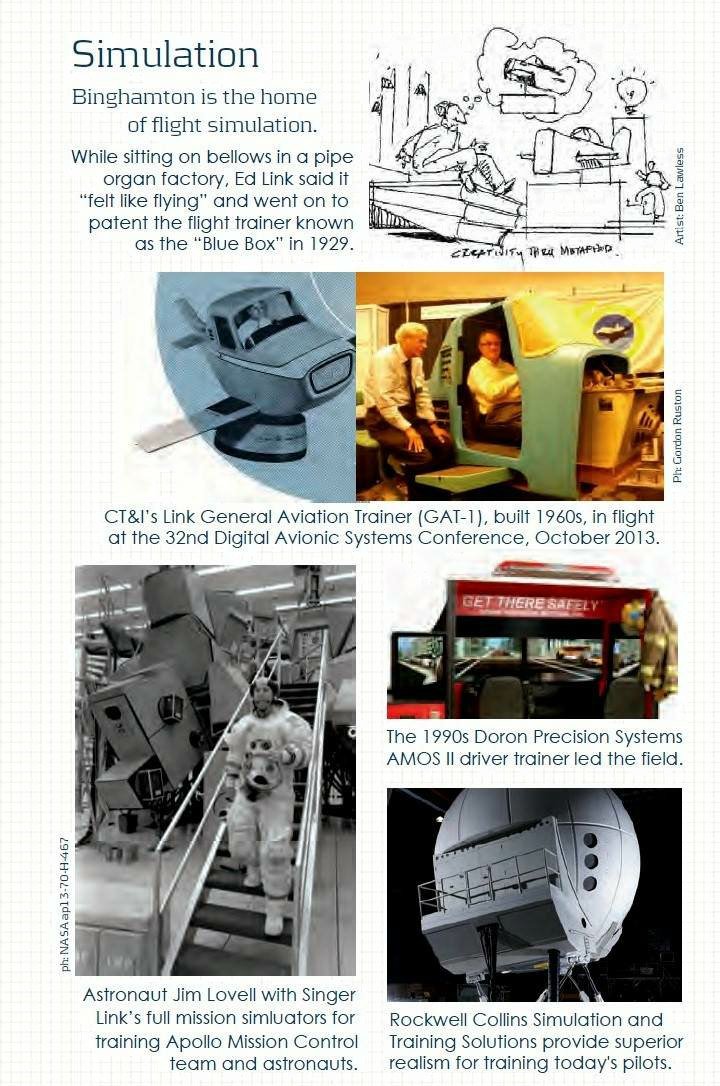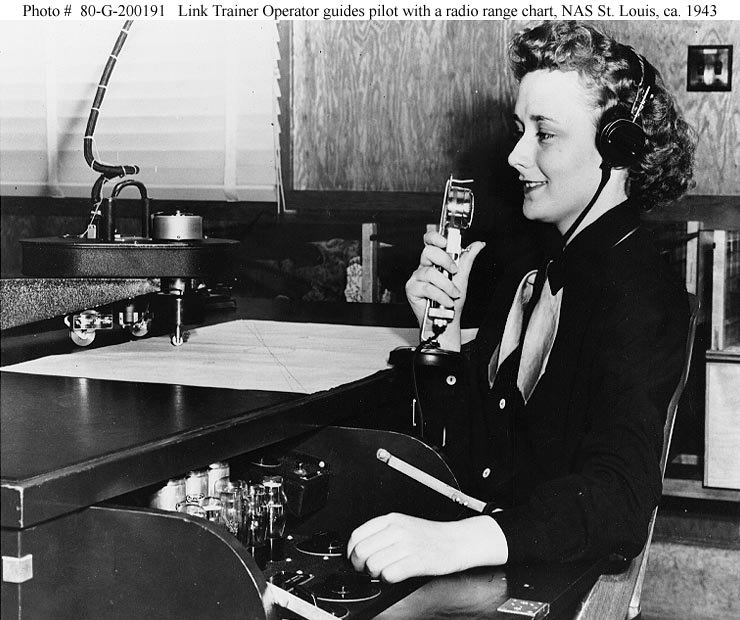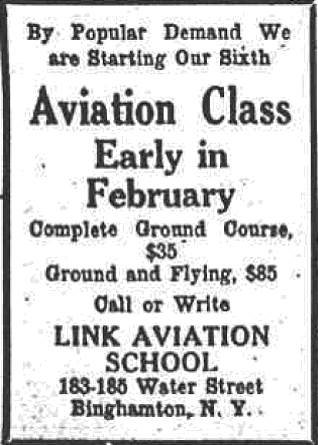Simulation
Birthplace of Virtual Reality 183-5 Water Street, Binghamton, NY
Simulation is one of the 20th century’s most significant breakthroughs, and its origins are firmly rooted in the computational, audio, robotic, and motion control technologies advanced by the companies that occupied 183-5 Water Street in Binghamton from 1893-1935. Flight simulation has been essential for helping take pilots to the sky, astronauts to the moon, and the 21st century into 3-D virtual worlds. The tools of simulation have been applied to many other fields, such as predicting the weather and modeling the economy.
Bundy Manufacturing Company
In 1893, Bundy Manufacturing Company moved into its new 4-story brick factory at 183-5 Water Street, making time clocks to track production and labor in an expanding world of business and industry. The company changed its name to International Time Recording Company in 1906 and moved to Endicott in 1907, later becoming IBM. In the Water Street era, the time card technology was added to the dial time recording line, and two stories were added, making it one of the largest structures in Binghamton.
In 1908, the Automatic Music Company purchased the building for $60,000 to manufacture the self-playing pianos popular in prominent cafes and big-city hotels. These machines were fitted with a nickel-in-the-slot device and the latest tunes played from paper-punched rolls. The company expanded to self-playing violins, known as “violanas,” before going bankrupt in 1914. The Afton Lake home of the company’s president was sold to Ansco, where generations of families enjoyed summer fun.
Edwin Link, Sr. purchased the business, renaming it the Link Piano Company. His teenage son, Ed Link Jr, was active in the factory, earning his first patent for a method to remove lint from the piano rolls. The company expanded into theatre organs to accompany silent films, a viable business until talking pictures gained ground in the 1930s. About the same time as the demand for theatre organs was declining, Ed Link Jr realized that bouncing on an organ bellows eating lunch “felt like flying.” By 1929, he had a patent for an “airplane” that balanced on two pairs of organ bellows and was turned by player piano motors. With this introduction of the Link Aviation flight trainer, affectionately known as the Blue Box, the era of modern aviation began, training thousands of pilots to fly with instruments in all kinds of weather. The Link Aviation School at 183-5 Water Street operated for five years until the building was badly damaged by the Great Flood of 1935.
Modern Day
The site became a parking lot, and in the 1970s, a parking ramp was built on the site of the Birthplace of Virtual Reality. Each of the occupants of 183-5 Water Street used new tools and ways of thinking to create new solutions and even new industries. During the first half of the 20th century, the techniques of motion control for automatic musical instruments led to motion control in flight simulation. Meanwhile, the need for advanced data processing drove the development of early computers for accounting, complex industrial design, and for a host of other needs. The modern computer arose not out of a lone inventor's genius or some single entrepreneur's desire to establish a business, but rather out of a broad need for faster number crunching. The joining of motion control and computer technologies resulted in highly sophisticated robotic devices able to simulate complex worlds.
Binghamton Press 1931- Feb – 03Companies
L3
Diamond Visionics
Sarnicola Simulation
Rockwell Collins
Simulation Coalition WAC window project





